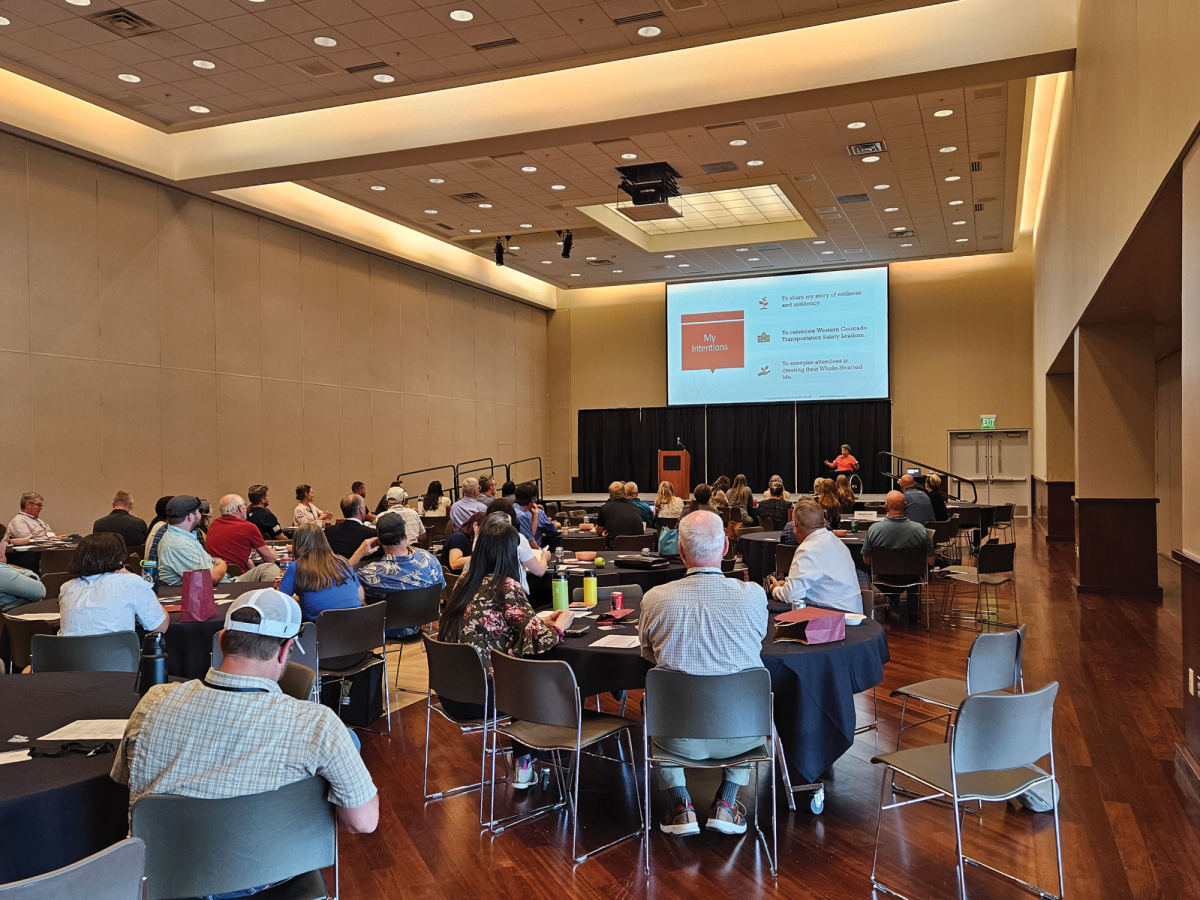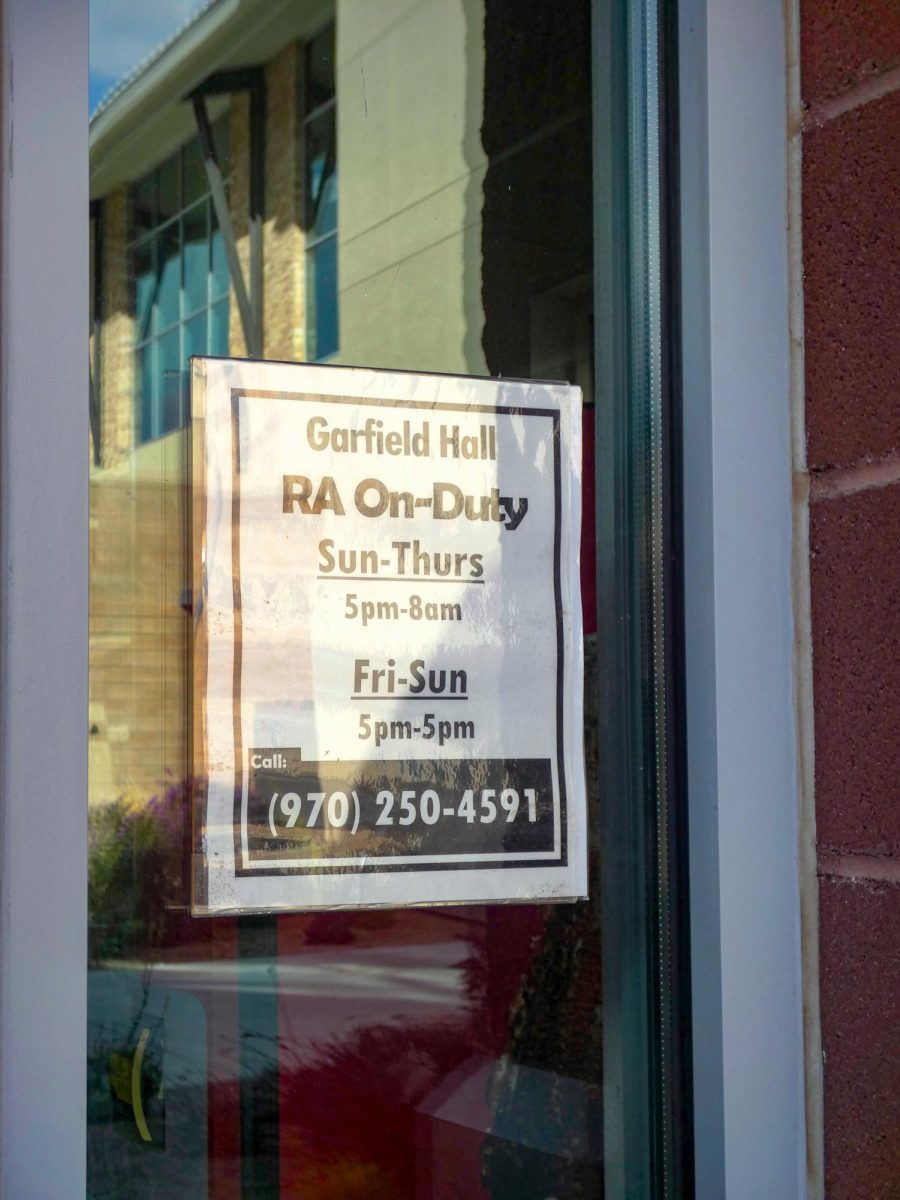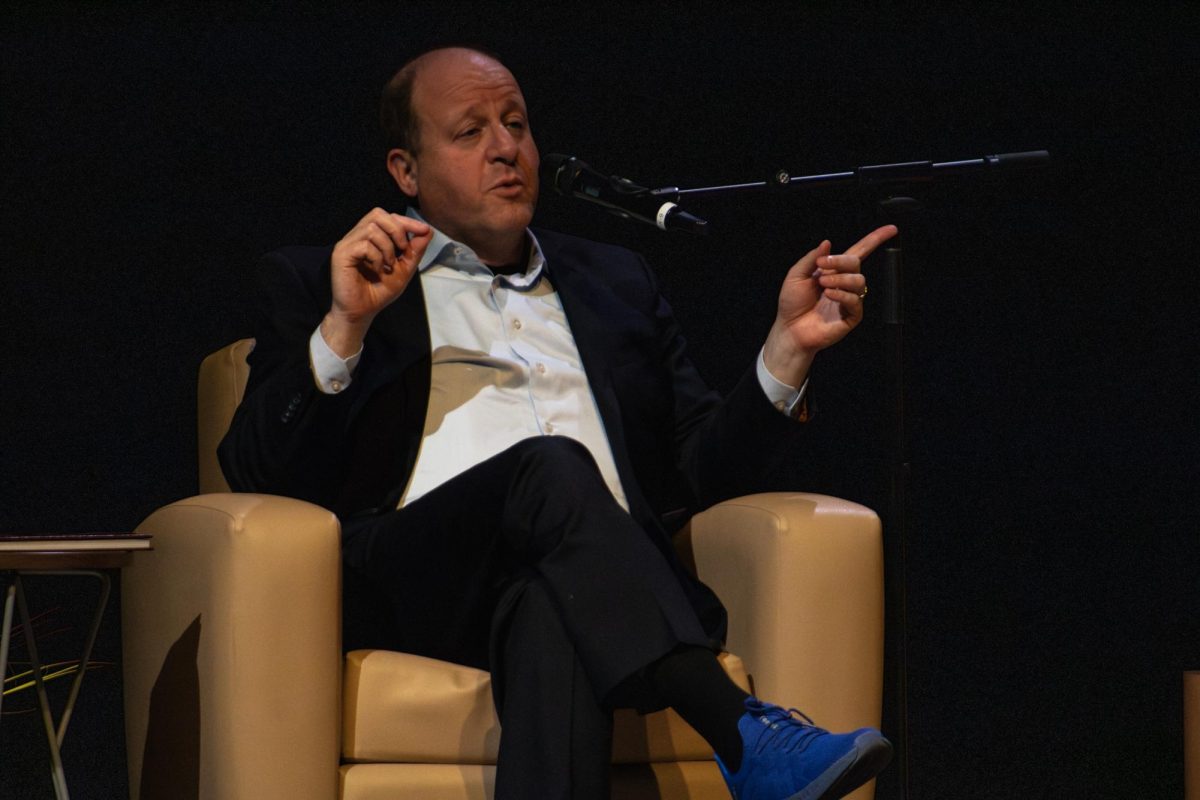The first annual Western Colorado Traffic Safety Symposium was hosted at Colorado Mesa University (CMU) on Aug. 28, 2024. A diverse crowd of engineers, officers, lawyers and advocacy groups gathered to discuss a deadly topic – fatalities and injuries while on the road.
The event was planned and hosted by the Mesa County Regional Transportation Planning Office (RTPO). Rachel Peterson, the Transportation Planner at RTPO was the driving force behind the event. A similar event has been hosted on the Front Range for the past few years and Peterson said that representation of the region has been limited.
“Usually it’s just like me and three other people from the Western slope,” said Peterson.
Travel to and from the Front Range can be time consuming and that is a barrier to broader representation. The RTPO hoped to break down that barrier while shining some light on the specific issues facing this region.
According to data from the RTPO, Mesa County has averaged 17 fatal crashes per year since 2016. It is the fifth highest in the state. The majority occur on rural roads with speeding due to aggressive driving and overturning as the leading causes of death.
Strategies to mitigate all types of crashes have been implemented across the county by law enforcement, transportation engineers and outreach coordinators. Captain Matt Ozanic of the Colorado State Patrol spoke about implementing surge operations on historically high-risk roads. The goal is to discourage speeding with increased police officer presence.
According to Ozanic, the location for a surge is chosen through data driven approaches to crime and traffic safety or DDACTS. Data collected from crash locations, speeding ticket locations and reports from dispatch are synthesized to choose the most impactful corridors.
One intersection in Clifton was the site for nearly a quarter of all fatal crashes in a prior year in the county. Through surge operations, it has been brought down to zero. Ozanic strongly encouraged public reporting of aggressive or potential drunk driving to help make this data more effective.
To report aggressive and/or drunk drivers simply call 911 or *CSP. Callers should be prepared with the make, model, license plate number and general direction of travel for dispatch. Even if the driver isn’t apprehended that day, it could serve as a new spot for a surge.
Speeding was frequently referenced as having the biggest impact on whether or not a crash is fatal. According to the Institute for Road Safety Research, as driving speeds increase, the likelihood that a fatality will occur in a crash also increases. This is due to decreased braking distances and limited time for humans to react.
Tila Duhaime from Emergency Streets Partnership suggested that having over 40,000 crash-related deaths in the US last year constitutes an epidemic. She and her business partner, Kevin Krizek, a civil engineering professor at CU Boulder, developed a program that would minorly and temporarily adjust infrastructure at fatal crash sites within 24 hours.
“[Traffic fatalities] are a slow drip that we’ve gotten used to over decades,” said Duhaime.
She believes this is a public health issue. It was criticized for being reactionary as opposed to proactive. Duhaime and Krizek both said that something to target speed needs to be done now.
“It’s not that radical,” said Krizek. “Speed is the pathology.”
Using modular modifications such as small concrete barriers, metal posts and signage, the site would have a temporary reduction in speed to prevent additional crashes and serve as a cautionary reminder to other drivers.
Physical changes to infrastructure were the most commonly suggested solution to increase traffic safety. Speed reduction and increasing attentiveness were cited as the most important factors of those changes.
Chief Operating Officer of District 51 schools Clint Garcia said that he wants to see flashing crosswalks in front of Grand Junction High School, similar to those on 12th street next to CMU. Glenwood Springs Probation Supervisor Terry Shanahan said he wants to see more sobriety checkpoints everywhere.
Currently, the RTPO is in the final stages of creating the first ever Mesa County Safety Action Plan. It is a data driven and public informed plan that “aims to identify solutions to reduce the number of deaths and serious injuries on our roads across Mesa County.” To learn more about the statistics of road safety in this county, visit mesacountysafetyactionplan.com.
The closing keynote speaker was Dr. Terry Chase. She was hit by a car in Grand Junction in 1988 and has been in a wheelchair ever since. Her spinal injuries occurred over the 5th street bridge as a speeding truck collided with her and her bicycle.
Her story was one fraught with self-doubt and fear but also perseverance and self-acceptance. Her book, “Spoke By Spoke,” goes into greater detail. She reminded all of the attendees exactly why they were there that day. The crash that bound her to a wheelchair was fully preventable and could have been less lethal if the truck was going slower.
Speed reduction, attentiveness, infrastructure changes and education were the key components of every presentation at this symposium. Members of every group in attendance said the diverse collaboration will aid the holistic approach to combat injury and death while on the road.









